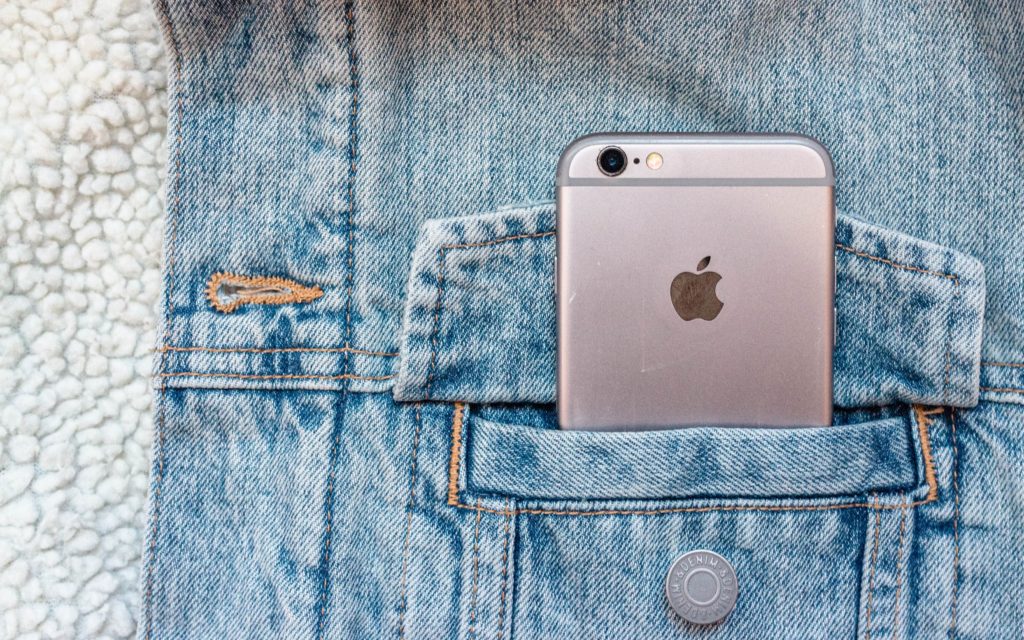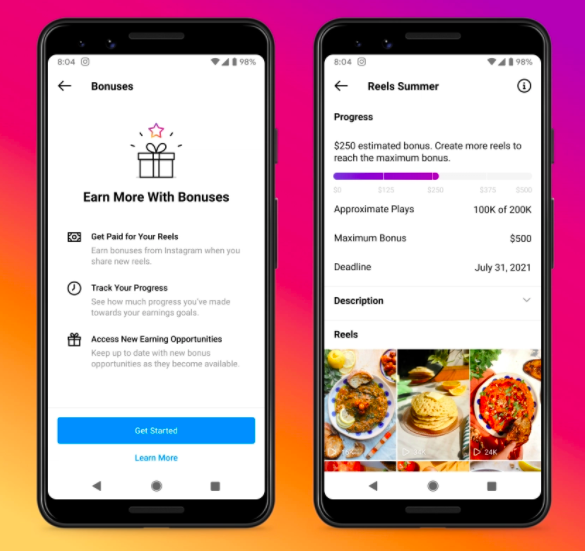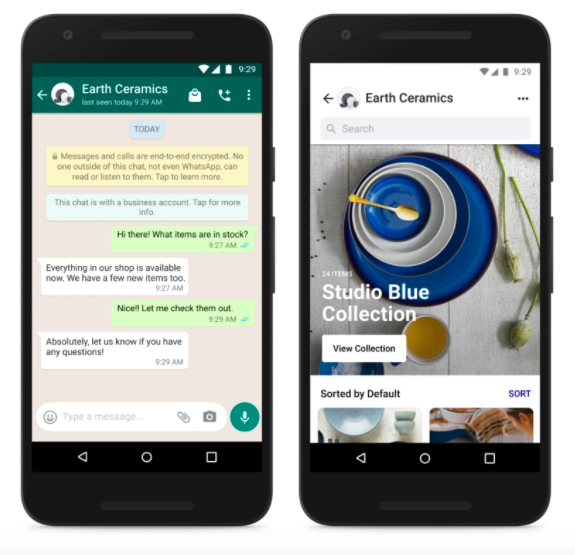12 LinkedIn Scheduling Tools for 2024
Tired of the LinkedIn posting hustle? You’re not the only one. Many social media managers struggle with consistent and regular LinkedIn communication. Since LinkedIn isn’t just about LinkedIn company pages,...

Facebook is an ever-changing landscape that constantly updates its algorithm in an effort to improve the user experience as much as possible. As new changes constantly hit the platform from seemingly nowhere, it can become a real headache for businesses and marketers to stay ahead and adjust their social media strategies at the drop of a hat.
In this article, we’ll be going over important trends and big updates Facebook is implementing in 2021 that you need to take note of. We’ll also show you how to overcome the hurdles certain changes might present and how to exploit new Facebook updates and trending strategies to your advantage.
On April 16, 2021, Apple released iOS 14.5 to its ecosystem of nearly 1 billion iPhone users. The update introduced new features like better Face ID, new emojis, bug fixes and something that plunged the Facebook advertising world into utter chaos; App Tracking Transparency.
Facebook and Apple have always been at odds with each other. Facebook loves gathering data and Apple hates it. In 2018, Facebook was shoved into the spotlight thanks to a lawsuit by the Federal Trade Commission over a lack of transparency they displayed when gathering private user information. With more and more people worried about their consumer privacy, the lawsuit only helped to spread distrust for Facebook and subsequently spurred an estimated 1 in 4 Americans to uninstall the app from their devices.

Fast-forward to 2021 and Apple has decided to take things into their own hands. Technically, App Tracking Transparency alone doesn’t make any massive changes to how iOS handles ad tracking considering users have been able to opt out of ads tracking before. The main difference with the iOS14 update is that users are presented with that choice front and center, every time they open a new app post-update. Developers are now forced to ask users for permission to track their behavior across different apps via a standardized prompt. The real nail on the coffin? Over 96% of iOS 14 users have opted out of app tracking.
What this means for Facebook marketers is that data accumulated via Pixels and other tracking methods will in essence disappear. You won’t be able to send remarketing ads and reports will be inaccurate. It’s not all bad though.
Here are a few ways marketers can respond to iOS14:
By the end of 2022, Facebook plans to invest $1 billion in programs that give creators new ways to earn money for the content they create on Facebook and Instagram. The social media giant attempts to lure in new creative talent and retain their existing talent by introducing new bonus programs on Instagram and Facebook that will “reward creators for great content’ – Facebook CEO, Mark Zuckerberg
The fund includes ad revenue streams from content such as IGTV and in-stream ads. Facebook is also working on follower-based support features like badges, subscriptions, icons, tips and pay-per-view events. Creators can also partner with brands via affiliate programs, create branded content campaigns and will even be able to create in-profile shops.

Facebook wants to incentivize a positive feedback cycle that will reward creators who entertain and engage their followers. Stars Challenges, which is now expanding to include gamer creators, is a good example of this approach.
The Bonus Program will pay creators through a series of initiatives across Facebook and Instagram that will be “seasonal, evolving and expanding over time.”
Once a creator reaches an agreed milestone using Facebook’s monetization tools, a proportion of the cash received will be pledged toward funding the creation of new and innovative content. While no one has all the details, we do know that these bonuses are available for select creators who have been personally invited by Facebook themselves, with a platform-wide application portal currently in the works.
Facebook’s Creator Fund is an obvious foray against TikTok’s $200 million creator fund that was announced in 2020. As TikTok’s short-form video format continues to catapult the platform to new heights year over year, Facebook is pulling out the big guns in an attempt to keep their own network enticing for creators. And it isn’t just Facebook that’s dishing out big bucks for influencers. Snapchat’s Spotlight set up a $1 million per day payout to creators, YouTube has its own $100 million fund and apps like Triller and Likee are all investing in their creators in an effort to keep them locked in.
What does this mean for you as a marketer/business owner? If you’re not already building a strong social media presence, now is the time to start. Content is king and creator growth isn’t slowing down any time soon. With Facebook rolling out new features in an effort to attract creative talent, using your social media accounts in a way that compliments Facebook’s goals is a good way to stay in favor of the platform and grow organically which both attracts new customers and builds brand presence.
Facebook likes to look out for the little guy. In 2020 the platform announced it would divvy up $100 million worth of grants to small businesses in desperate need of aid following the global economic upset brought on by the pandemic.
In July of this year, Facebook announced Campaign Ideas Generator, another tool for small businesses that need help with kick-starting their advertising efforts on the platform.
The Campaign Ideas Generator provides useful resources for small businesses like premade creative and written assets and detailed campaign ideas.
To get started with the Campaign Ideas Generator, select your business type and the tool will suggest campaign ideas, robust insights and data and materials tailor-made for your specific business needs. Facebook is testing out “Ready to Go Ads”, a feature created for eCommerce and retail businesses. Ready to Go Ads include premade copy and creatives that you can consider for use in your campaign. This is especially useful for businesses that don’t have the resources necessary to create content on their own. You can even choose a holiday and Facebook will create event-related content that’s ready to use right away. The Campaign Ideas Generator can also help reduce blockers and come up with content that you can quickly put into action. If you get inspiration from any of the content ideas Facebook automatically supplies but want to make some tweaks, Facebook includes a DIY creative suite full of solutions for creating content on your own.
Facebook has announced a new option you can access at the Ads level of an ad campaign where you can opt to allow Facebook to automatically swap headline, primary text and description placements when the algorithm sees fit. Ads using this option will behave similarly to Google’s Responsive Search Ads in that Facebook will dynamically rotate your caption, headline, or description when showing to a user based on what Facebook’s system determines they would best respond to.
For example, the description may become the primary text prompt instead and vice versa. If you add text to a specific placement however, that text won’t be swapped outside of said placement. Like many automated optimization features Facebook offers, the placements will be determined by data gathered by Facebook in real-time as your ads are running. In 2019, Facebook rolled out a similar feature in the form of multiple text variations for ad copy. It gave advertisers the ability to add different ad text in one campaign. Then, Facebook’s algorithm chose the version it wanted to display based on a user’s engagement behaviors.
How the social network determines the option to get the best response is up to the algorithm with the idea being that Facebook knows how people react to different text based on the massive amounts of data Facebook has gathered. Rather than manually inputting multiple lines of copy and split testing them yourself, Facebook will simply do it for you.
What’s great about this new feature is that it’s easy to set up with just the toggle of a button. It’s also friendly for all budgets, all account sizes and all business types from small businesses to enterprises. The optimize text per person option expands upon Facebook’s existing A/B split testing program while making the process simpler for campaign managers.
As of June 2021, Facebook reports 300 million monthly Shops visitors and over 1.2 million monthly active Shops. Facebook is making it even easier for users to browse shops and buy products while they scroll through their feeds. While Instagram Shops and Facebook Marketplace have both resided in their respective places on the bottom of the navigation tabs for a while now, in June on a live Audio Room, Mark Zuckerburg announced that users will be able to browse their favorite Shops on WhatsApp and in Facebook Marketplace.

“More than 1 billion people use Marketplace each month, so we’re making it easy for businesses to bring their Shops into Marketplace to reach even more people,” Zuckerberg wrote in a Facebook post. When customers view a shop on WhatsApp, they’ll have the option of chatting with a business before buying something. At its F8 conference earlier in June, Facebook revealed updates to WhatsApp for Business. Previously, it could take weeks to set up a business account, but now businesses can complete the signup process in just a few minutes. Facebook likely did this to incentivize businesses to leverage WhatsApp’s 2 billion global user base as medium for customer support.
The open room “podcasting” app Clubhouse skyrocketed to the top of the app charts in early 2021, in part thanks to everyone being in lockdown with nothing better to do. And while the wild party that was Clubhouse is winding down quite dramatically, Facebook saw potential in the innovative idea and have fashioned their own audio experience, Live Audio Rooms.
Much like Clubhouse, Facebook users can discover, listen in on and join live conversations with public figures, experts and others about topics they’re interested in. Public figures and select Facebook Groups in the US can create Live Audio Rooms on iOS, and select podcasts will be available to listeners in the US.
Public figures can invite friends, followers, verified profiles, or anyone in the room to be a speaker.
Hosts can invite speakers in advance or while the room is live.
Conversations can have up to 50 speakers, and there’s no limit to the number of listeners.
One of the creator monetization tools we mentioned earlier is also available in Audio Rooms; listeners can show appreciation to hosts by sending Stars which bumps those listeners up to the “front row.”
Live Audio Room hosts can also select a nonprofit or fundraiser to support during their conversation, and listeners and speakers can directly donate.
In July Dan Levy, Vice President of Ads & Business products, released a written statement in which he shared what changes Facebook would be implementing in the pursuit of personalization. Here were his four main points:
A survey conducted in 2020 reported that 77% of consumers would shop more often if they used AR, yet only 1% of businesses are currently implementing AR in their marketing.
Apple CEO Tim Cook was quoted as saying
“I do think that a significant portion of the population of developed countries, and eventually all countries, will have AR experiences every day, almost like eating three meals a day. It will become that much a part of you.”
At least Tim and Mark can agree on something. In June, Facebook announced that they would be expanding access to AR Try-Ons, introducing new API’s and integrating with new ads experiences.
“A lot of shopping discovery begins with visual discovery, right, so you see something that you think is awesome. And then, you know, maybe you want to see other products that are like that, or you want to figure out how to get that product,” Zuckerberg explained. “And this is the type of problem that AI can really help out with.”
Over on Instagram, an AI-based Visual Search feature will roll out for testing in the coming months. Consumers will be able to upload their own photos and use Facebook’s AI to find similar items they might be interested in.
Right now, Facebook is working to make it easier, faster and more cost-effective for brands and advertisers to bring AR into their catalogs into Business Manager by piloting APIs for Beauty Partners with Modiface, a L’Oreal company, and Perfect Corp, two of the leading artificial intelligence and augmented reality beauty tech solutions providers. Over the coming months Facebook is expected to expand into new industries like home decor and apparel. In addition, advertisers will be able to upload and use an AR product catalog for Dynamic Ads on Facebook. The catalogs will power virtual AR Try On effects in ads that will automatically show relevant products to people based on their interests, intent and actions.
While these incredibly robust features are only available for a very select few brands, Facebook plans on expanding to more brands before the year is out.
One of the fastest rising Facebook trends in 2021 will likely be the increased usage of not just Facebook Live but livestreams as a communication format in general. In fact, 80% of live stream viewers will watch a stream from a brand rather than read its blog.
Facebook Live fell out of favor for a few years but in 2021 has seen a resurgence in popularity thanks to the lockdown. As businesses ran out of content to post, they turned to live video to engage with their audiences. From guest podcasts and behind the scenes streams to webinars and Q&A, savvy marketers and business owners are finding new ways to entertain and educate their audience through a live video medium. As governments across the globe imposed lockdowns in an effort to curb the spread of the coronavirus in 2020, consumers were turning to Facebook Live for their dose of social contact.
According to the latest reports, there was a 26.9 percent year-over-year increase in Facebook Live usage in Q2 2020 and a whopping 126 percent increase in four short months.
At the most basic level, a chatbot is a computer program that processes and mimics human conversation, allowing people to interact with it across digital communication channels as if they were speaking to a human. Chatbots can be as simple as pre-programmed automated response systems or as complex as neural language processors able to tweak their tone of voice on the fly.
Businesses use chatbots to nurture leads, satisfy customer complaints and even automate payments. With a projected worldwide market size of more than $1.3 billion by 2024 innovations in machine learning, the practicality of chatbot use is set to reach new heights.
Chatbot trends to look out for in 2021:
If you want to start implementing chatbots for your own Facebook marketing efforts we’ve created an entire guide on using chatbots to grow your business.
Staying on top of Facebook’s many updates and changes can be nearly impossible if you don’t know where to look. We hope this list helped you discover new Facebook trends you should look out for and how to use said trends to your advantage.